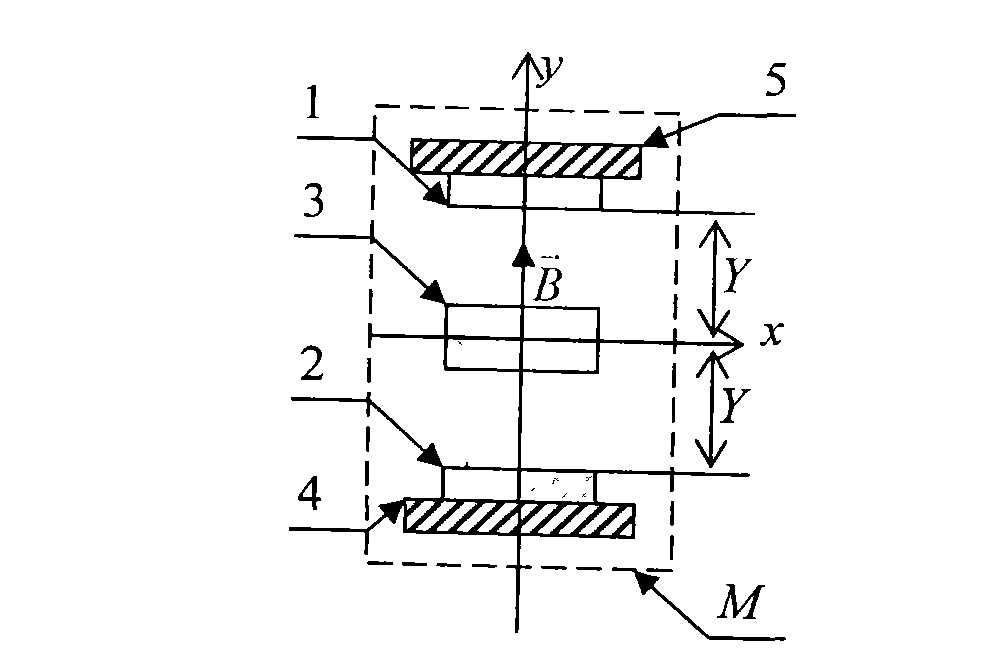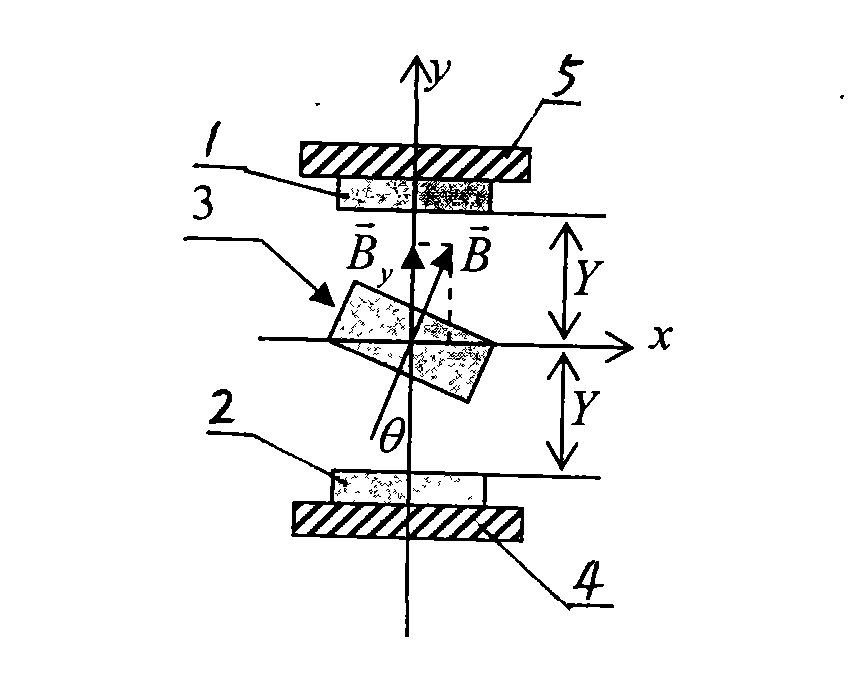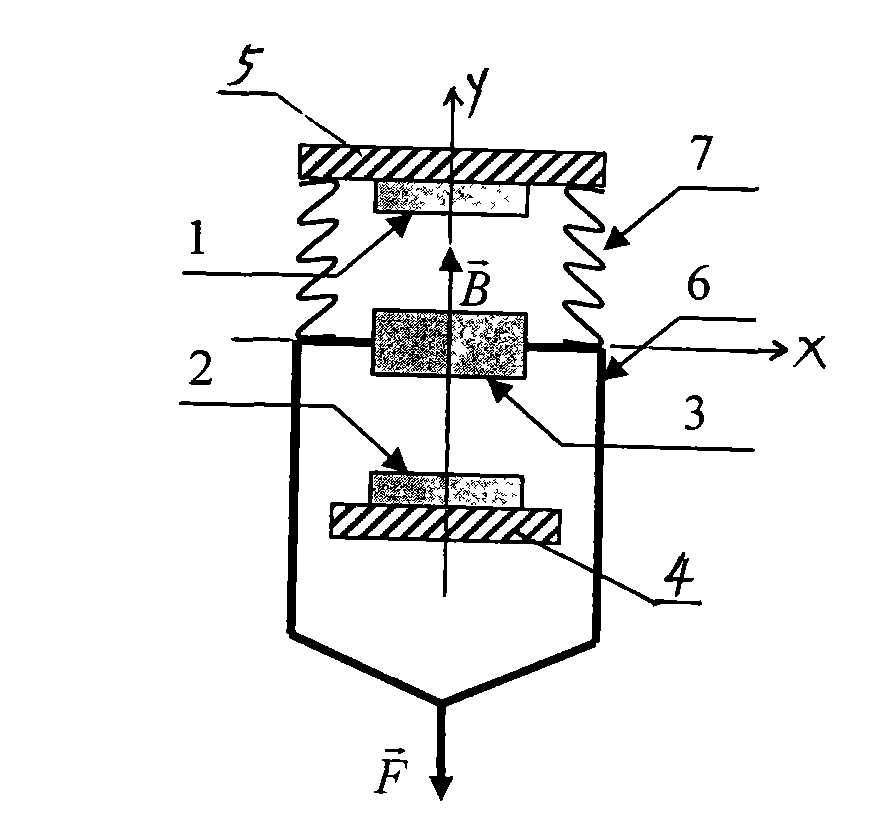Hall difference equation force measuring method for symmetrical and complementary structure
A symmetrical and force-measuring technology, which is applied in the measurement of fluid pressure involving magnet displacement, the measurement of elastic deformation force through measuring gauges, and the use of electric/magnetic devices to transmit sensing components, etc., can solve the problem of non-linear factors that cannot be eliminated , There are no problems such as non-contact measurement, high magnet size requirements, etc., to achieve the effect of convenient application, offsetting DC component and zero temperature drift, and simple interface
- Summary
- Abstract
- Description
- Claims
- Application Information
AI Technical Summary
Problems solved by technology
Method used
Image
Examples
Embodiment Construction
[0030] 1. The structure and working principle of the force measurement model
[0031] See attached figure 1 , the model structure of the Hall differential force measuring method with a symmetrical complementary structure is shown in part M, and the Hall element H 1 and Hall element H 2 Symmetrically placed outside the two ends of the cylindrical permanent magnet 3, the Hall element H 1 and Hall element H 2 The sensitive center of the cylinder is on the same axis as the center of the cylindrical permanent magnet 3, and the Hall element H 1 and Hall element H 2 The faces of the character logos are in the same direction, and they all face the opposite direction of the y-axis and are perpendicular to the y-axis. The center of the cylindrical permanent magnet 3 is located on the coordinate origin, and the y-axis is consistent with the axis of the cylindrical permanent magnet 3. In the initial state, the Hall element H 1 and Hall element H2 The distance from the coordinate ori...
PUM
 Login to View More
Login to View More Abstract
Description
Claims
Application Information
 Login to View More
Login to View More - R&D
- Intellectual Property
- Life Sciences
- Materials
- Tech Scout
- Unparalleled Data Quality
- Higher Quality Content
- 60% Fewer Hallucinations
Browse by: Latest US Patents, China's latest patents, Technical Efficacy Thesaurus, Application Domain, Technology Topic, Popular Technical Reports.
© 2025 PatSnap. All rights reserved.Legal|Privacy policy|Modern Slavery Act Transparency Statement|Sitemap|About US| Contact US: help@patsnap.com



